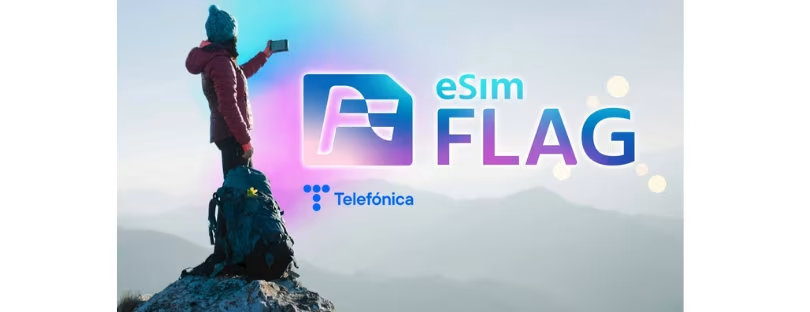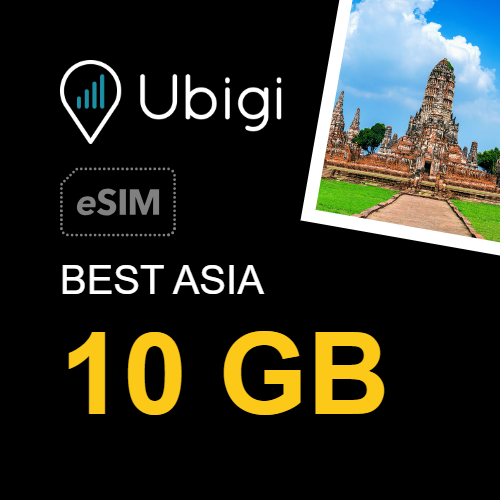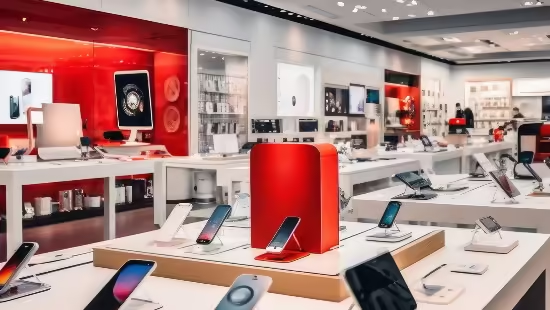
Telefónica Unveils eSIMFlag, Taking Aim at the Travel eSIM Market
The travel eSIM market is booming, driven by rising international mobility and the growing number of smartphones supporting embedded SIM technology. While digital-first players like Airalo and Holafly have dominated the space, telecom giants have mostly stayed behind the scenes—until now.
Telefónica, one of the world’s largest telecom operators, is stepping into the spotlight with the launch of eSIMFlag, its new direct-to-consumer travel eSIM service. This move marks a significant shift, as traditional carriers begin to compete head-on with independent eSIM providers in the race to offer global, contract-free mobile connectivity.
Why Telefónica Matters in the Travel eSIM Space
Telefónica, through its Global Solutions arm, already powers many leading travel eSIM platforms behind the scenes—providing wholesale connectivity, roaming infrastructure, and a centralized management hub much like a Shopify for telecom offerings.
This backend strength translates into real advantages:
- Global network access via multiple IMSI donors (Telefonica and partner networks), ensuring broad coverage and competitive roaming rates.
- A cloud‑based platform enabling B2B and B2C offerings, from bulk travel operators to direct consumer portals.
Now, with eSIMFlag, Telefónica is going direct-to-consumer, combining its wholesale muscle with retail simplicity.
What eSIMFlag Brings
- Seamless activation: Users can switch plans and install eSIMs digitally—no physical SIMs, no store visits.
- Integrated voice/data/SMS packages powered by Telefónica’s infrastructure.
- Flexible pricing: Competitive daily or GB‑based plans across multiple travel destinations.
- Number retention: Keep your home number while using a separate eSIM for data or calls abroad.
Telco’s goal is two‑fold: provide travelers an affordable, scalable option while cutting into incumbent roaming revenues.
Disadvantages of eSIMFlag
- No voice or SMS services included—eSIMFlag offers data-only plans, so traditional voice calls and SMS aren’t supported. Travelers must rely on VoIP services like WhatsApp or Skype for communication .
- Only one regional plan available—Currently, eSIMFlag offers just a European-region unlimited data plan, along with single-country plans. There’s no broader global or intercontinental roaming option yet.
- No global plan support— Unlike many competitors, eSIMFlag does not offer an unlimited plan that covers every continent in one package.
Market Context & Forward Outlook
The travel eSIM market is booming. Kaleido Intelligence projects retail travel eSIM spending to expand by 500%—reaching $10 billion by 2028.
With Apple and many OEMs now embracing eSIM, Telefónica sees huge growth potential in both consumer and IoT device markets. Its own infrastructure and partnerships position it at the heart of this transformation.
Why It Matters for Travelers
As Telefónica brings its capabilities directly to consumers, we can expect:
- Better pricing vs. pay‑per‑day roaming plans from carriers.
- Higher reliability, built on Telco‑grade backend infrastructure.
- Easier onboarding for travel agencies, airlines, and digital booking services.
For Alertify readers, eSIMFlag is a pivotal development— aligning a mature telco’s wholesale power with a retail‑ready product tailored to global travelers.
At‑a‑glance: Telefónica’s Travel eSIM Evolution
| Offering Stage | Description |
|---|---|
| Wholesale/back‑end | Connectivity + management platform via Telefónica Global Solutions, used by travel eSIM vendors |
| eSIMFlag (new retail layer) | Direct‑to‑consumer travel eSIM service leveraging Telefónica infrastructure |
Conclusion
Telefónica’s launch of eSIMFlag firmly places it in direct competition with established telecom-led travel offerings like Vodafone Travel eSIM and Orange eSIM, reflecting a broader strategic shift in the market. Vodafone now supports connectivity across 206 destinations on over 700 mobile networks—with up to 150 GB packages, 5G access in 98 countries, and GenAI‑powered support tools—emphasizing both scale and digital convenience.
By entering the retail segment, Telefónica is signaling that legacy operators are no longer content to remain wholesale providers to startups—they’re leveraging their own infrastructure to serve customers directly, potentially undercutting independent marketplaces such as Airalo and Nomad. Airalo alone recently surpassed 20 million users, fueled by its global marketplace model and continuing investment from Telefónica Ventures, among others. Meanwhile, Nomad remains a data-centric challenger focused on simplicity and global coverage via a wide supplier base.
Market analysis underscores why telecoms are pivoting now. The global eSIM market was valued at approximately US $12 billion in 2025, with projections exceeding $20 billion by 2029 and compound annual growth rates above 14 %. Specifically, the travel eSIM segment is forecasted to grow from around US $325 million in 2023 to over US $700 million by 2030, at ~12 % CAGR. This fast growth reflects surging international travel, wider device compatibility, and falling user tolerance for expensive roaming.
Telefónica’s retail entry with eSIMFlag therefore matters: it brings a vertically integrated proposition that tightly aligns network control, structural margins, and brand trust—beneficial in a crowded, fragmented travel eSIM landscape. Compared to Vodafone, Telefónica may lack Vodafone’s current scale, but it potentially offers similar ambition with deeper integration among Latin America, Spain, and global roaming operators.
Moreover, consolidation appears to be an emerging theme in travel eSIM. Smaller pure-play providers may face pressure as telcos intensify retail competition or possibly explore partnerships and mergers to stay relevant. The telecoms’ pivot toward direct-to-consumer mobile data travel services reflects a broader trend: bridging the gap between consumer convenience and carrier-grade infrastructure.
In summary, eSIMFlag is more than just another eSIM service—it represents a turning point in telecoms’ posture toward global retail connectivity. It also signals the beginning of an era where traditional mobile operators will contend not only with each other but with nimble digital-first eSIM platforms—competing on global coverage, digital activation, service flexibility, and pricing.










